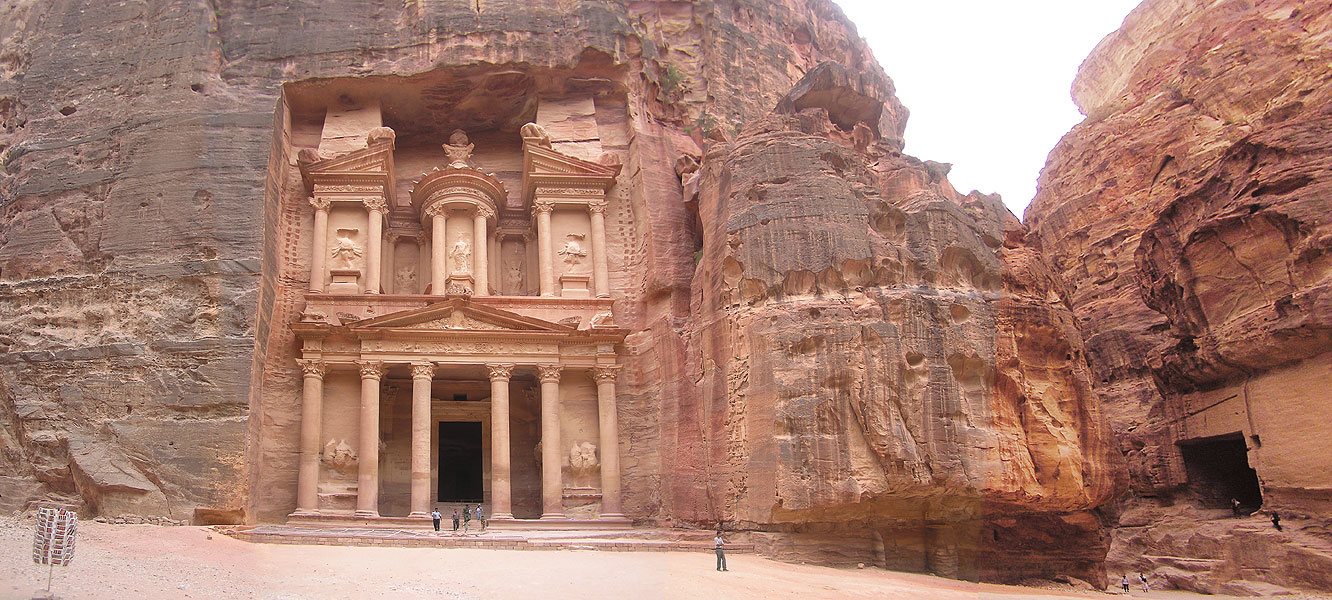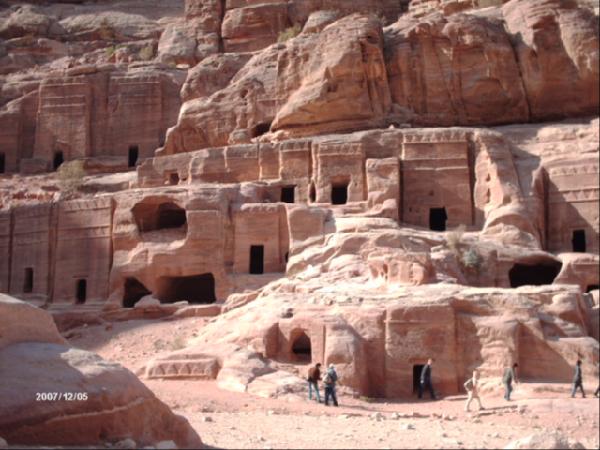
Valley Of PETRA.
ONE of the most wonderful of ancient cities is Petra. Its peculiar location, the history of its inhabitants, and its connection with prophecy, are the most prominent points of interest. It is located in the mountainous region called Seir, about midway between the Dead Sea and the eastern arm of the Red Sea, or Gulf of Akabah.
The city was built in a valley about a mile long and half a mile wide.
This valley is enclosed by almost, precipitous mountains, varying from two hundred to one thousand feet in height. In the sides of the valley are numerous short ravines, which terminate abruptly in the surrounding mountains, making the whole circuit about four miles. The main entrance to the city is from the east, through a ravine, which in some places is no more than twelve feet wide, while its sides rise two hundred feet high. Facing this ravine is the most beautiful structure of Petra, a temple, hewn out of the face of the opposite cliff. Further to the west, and high up in a ravine, stands another temple, also hewn out of the solid rock. Its front is one hundred and fifty-two feet in height and width. Travelers who have visited Petra, tell us that these buildings have a striking appearance, as the hewn and polished rocks are of many bright colors, blending with each other; while the cliffs above in their rude state add to the beauty of the scene by the contrast.
Besides many other large structures, there is a huge amphitheater cut entirely out of the rocks, and capable of seating more than three thousand persons. In the accompanying cut are seen some of the ruins with which the valley is strewn. The only edifice not excavated in the mountain, that has survived the ravages of time, is a palace, called by the Arabs, the house of Pharaoh. The most numerous remains at the present time are the tombs excavated in the faces of the cliffs, and sides of the ravines. In the picture, some of these appear on the left. Petra was the chief city in that region, and for many years was a leading commercial center. For a long time, the Edomites, descendants of Esau, dwelt here. They were the ones who refused to let the children of Israel pass through their country when journeying from Egypt to Canaan. Afterward it was possessed by the Moabites, who were the descendants of Lot. As the city was mostly hewn out of the rocks, entirely surrounded by high, rocky cliffs, and entered only by narrow ravines, it was a very strong fortress, and was for many years the residence of the Arabian princes. Its idolatrous inhabitants felt secure, and carried their wicked practices to such an extent that the Lord determined the destruction of them and their city. Jeremiah 49:1-22.
This prophecy has been strikingly fulfilled.
After 536 A. D., Petra was not mentioned in history, and its site not known until the thirteenth century, when its ruins were, identified by European travelers. Although it was long, the proud capital of Arabia Petraea, like Babylon, it has been entirely desolated. Even the wandering Arabs do not take up their abode in the once beautiful temples or splendid palaces, but dwell in their tents a few miles distant; while these grand structures, once the abode of kings and princes, are now used only for sheep-folds, and oftener make a home for wild beasts or a hiding place for robbers. Many of them are said to be almost as perfect as at the day they came from the builder's hand; but there they stand, desolate and forsaken, proud but sure witnesses to the unfailing word of God.
H. P. HOLSER.
